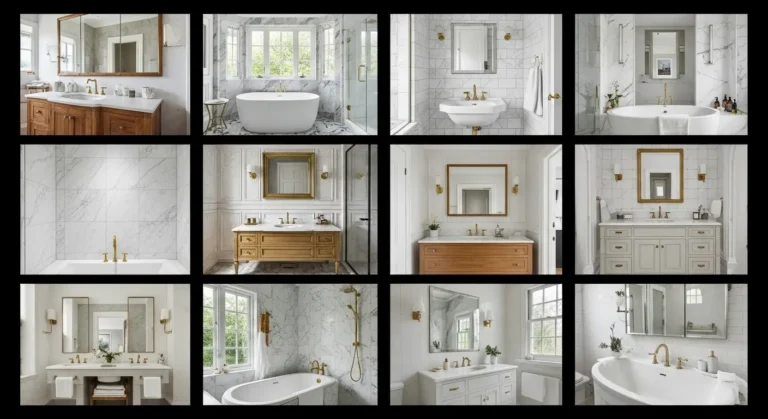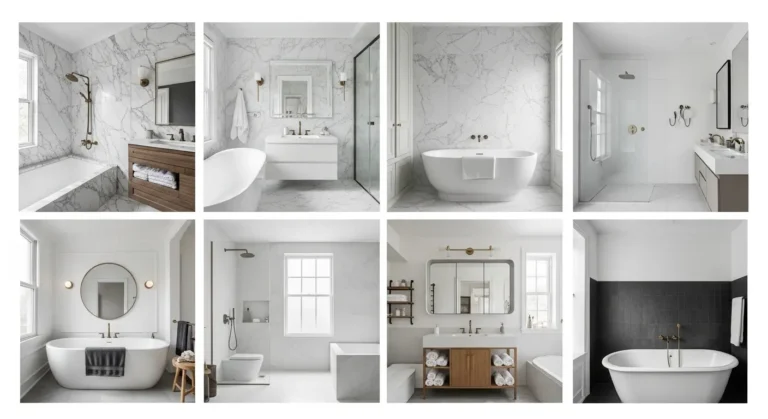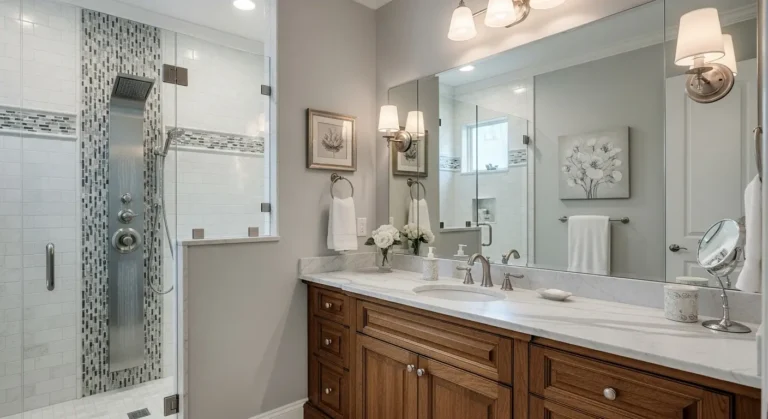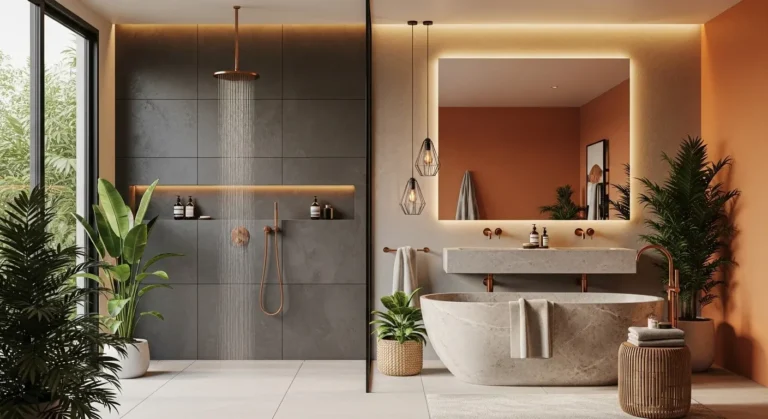Bathroom Remodel: 12 Essential Tips for a Successful Project
A bathroom remodel can improve both the look and function of an important space in any home. It offers a chance to update fixtures, layouts, and styles to better fit the needs and preferences of the household. Many homeowners consider remodeling to increase comfort, boost home value, or simply refresh an outdated design.
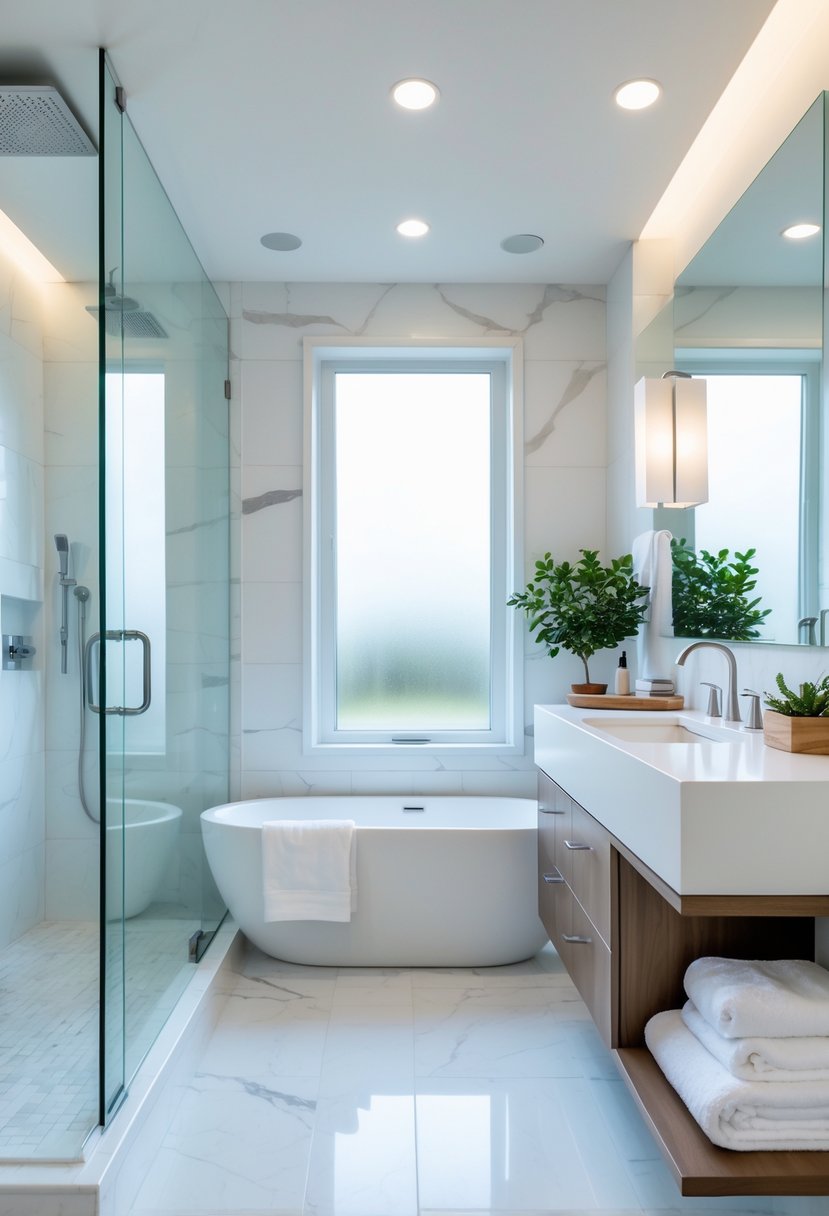
A well-planned bathroom remodel can make daily routines easier while enhancing the room’s appearance and efficiency. The process often involves choosing new materials, colors, and layouts to create a more enjoyable and practical space. Whether the bathroom is small or large, remodeling can bring noticeable improvements that suit different lifestyles and budgets.
1) Install a floating vanity for modern storage
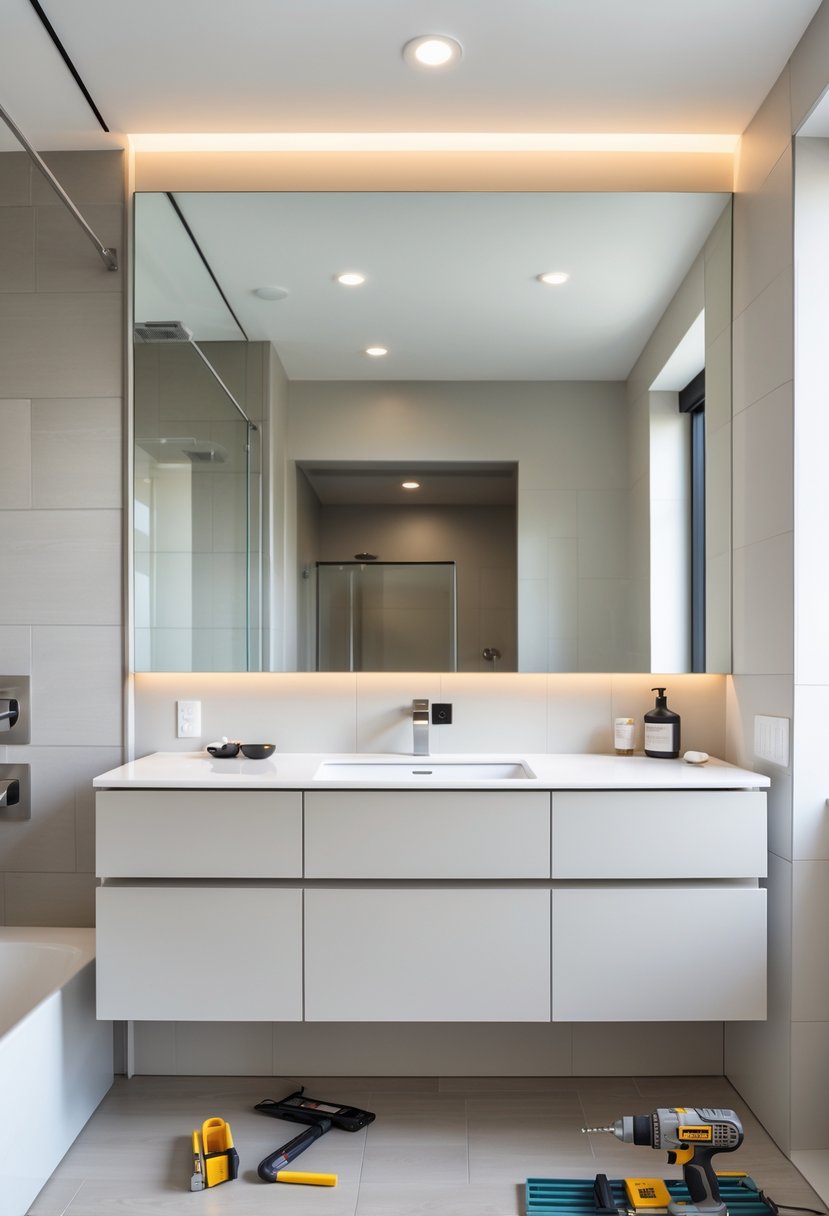
A floating vanity mounts directly to the wall, leaving open space underneath. This design creates a clean, modern look and can make a bathroom feel larger.
It offers practical storage by freeing up floor space for easier cleaning and extra room. Floating vanities also provide storage inside cabinets, helping keep items organized.
Proper installation is key. It requires secure wall mounting to hold weight safely and careful planning for plumbing placement.
2) Use large-format porcelain tiles for a sleek look
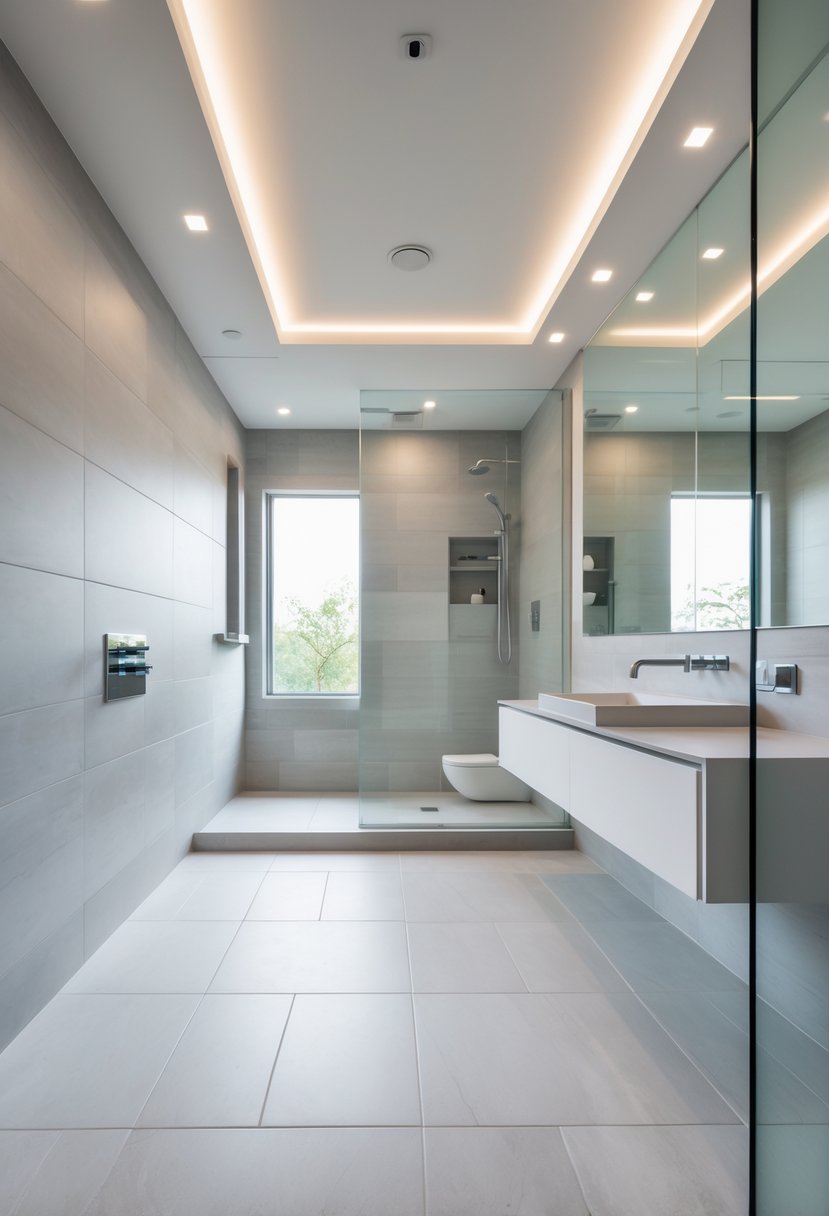
Large-format porcelain tiles create a clean, modern appearance in bathrooms. They have fewer grout lines, which helps walls and floors look more continuous and spacious.
These tiles come in many designs, often mimicking natural stone like marble. They are durable and easy to maintain, making them a practical choice for long-lasting bathrooms.
Using large-format tiles can give a bathroom a stylish, high-end feel without the complexity of smaller tile patterns.
3) Incorporate LED backlit mirrors for ambient lighting
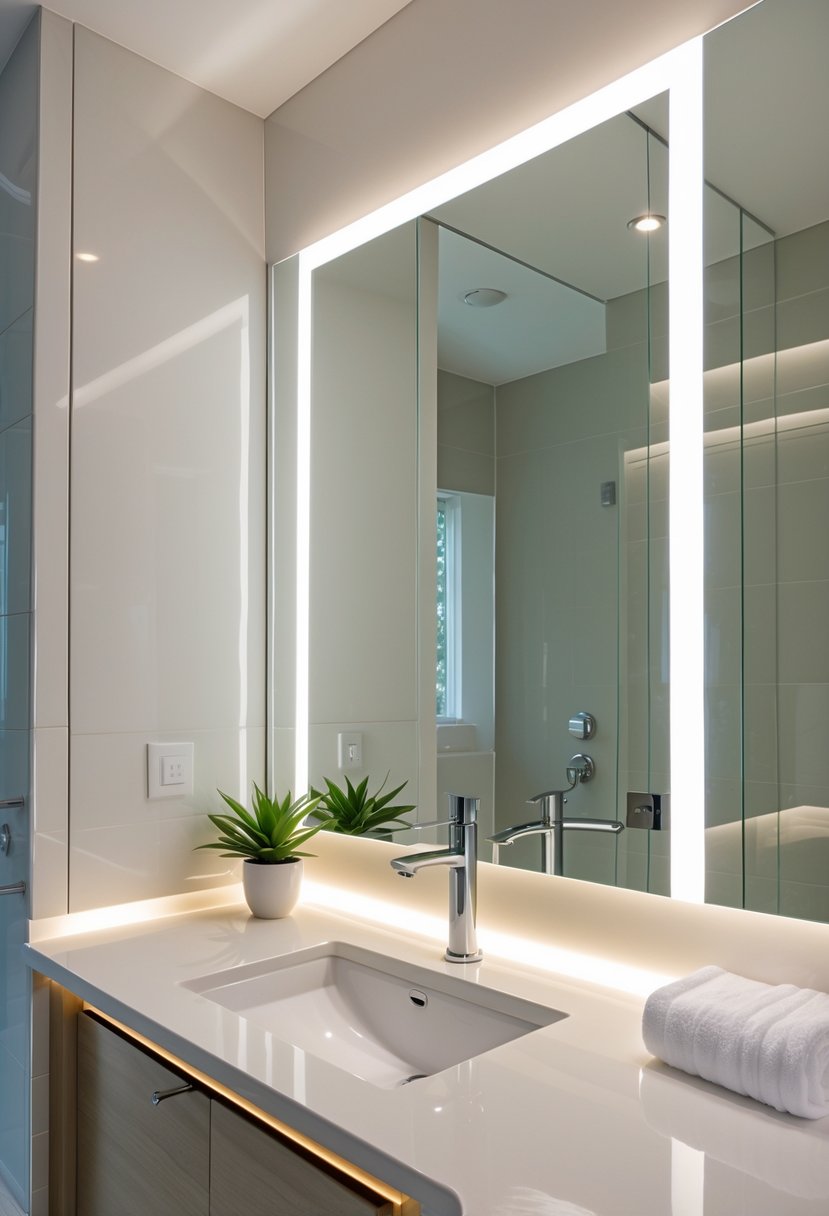
LED backlit mirrors add soft, even light around their edges. This helps reduce shadows on the face, making grooming easier.
They create a calm, inviting atmosphere in the bathroom. The light is not harsh and spreads gently across the space.
These mirrors often have modern designs that fit well with many styles. They can also save energy compared to traditional bathroom lights.
4) Choose a freestanding soaking tub as a focal point
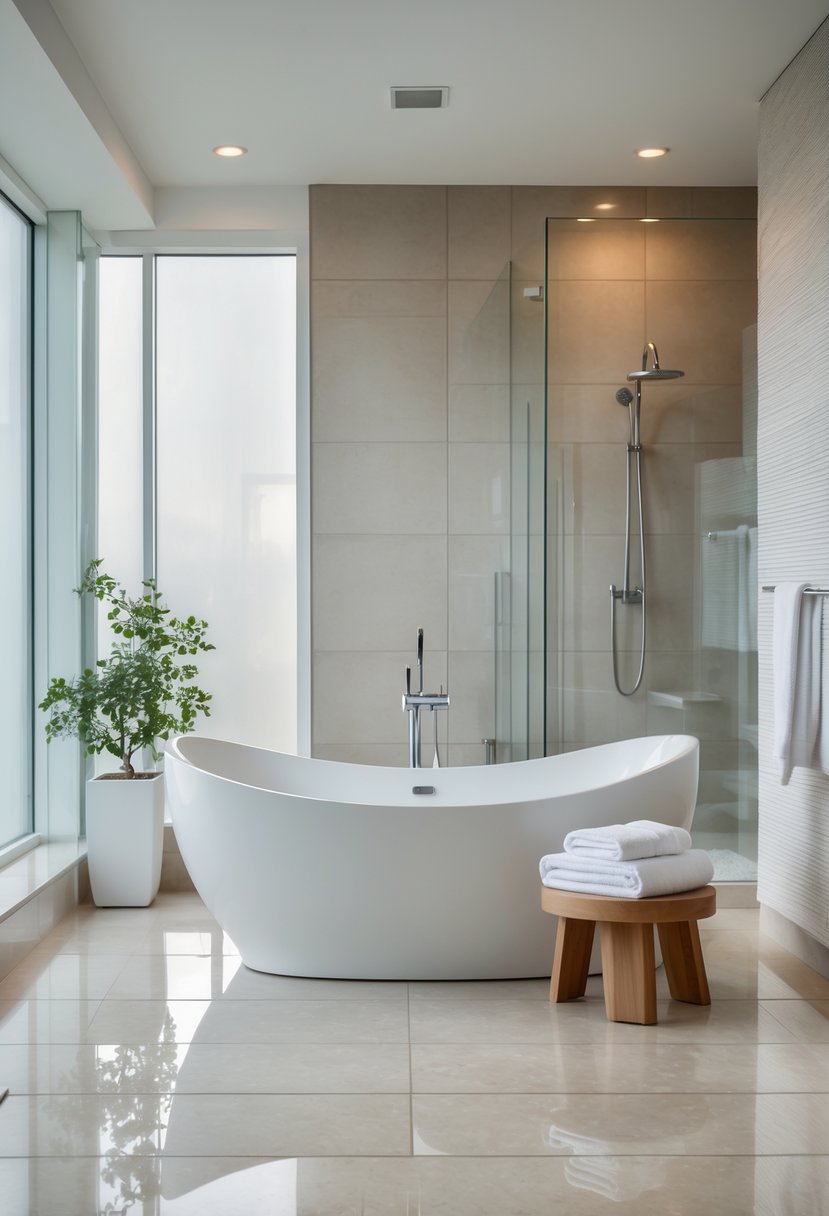
A freestanding soaking tub can become the main feature of a bathroom remodel. It draws attention and adds a touch of luxury to the space.
Choosing the right spot is important. It works best in a large, open area where it can be clearly seen.
This type of tub is designed for deep soaking, so a separate shower is usually needed. It changes the feel of the bathroom by creating a relaxing atmosphere.
5) Add heated flooring for year-round comfort.
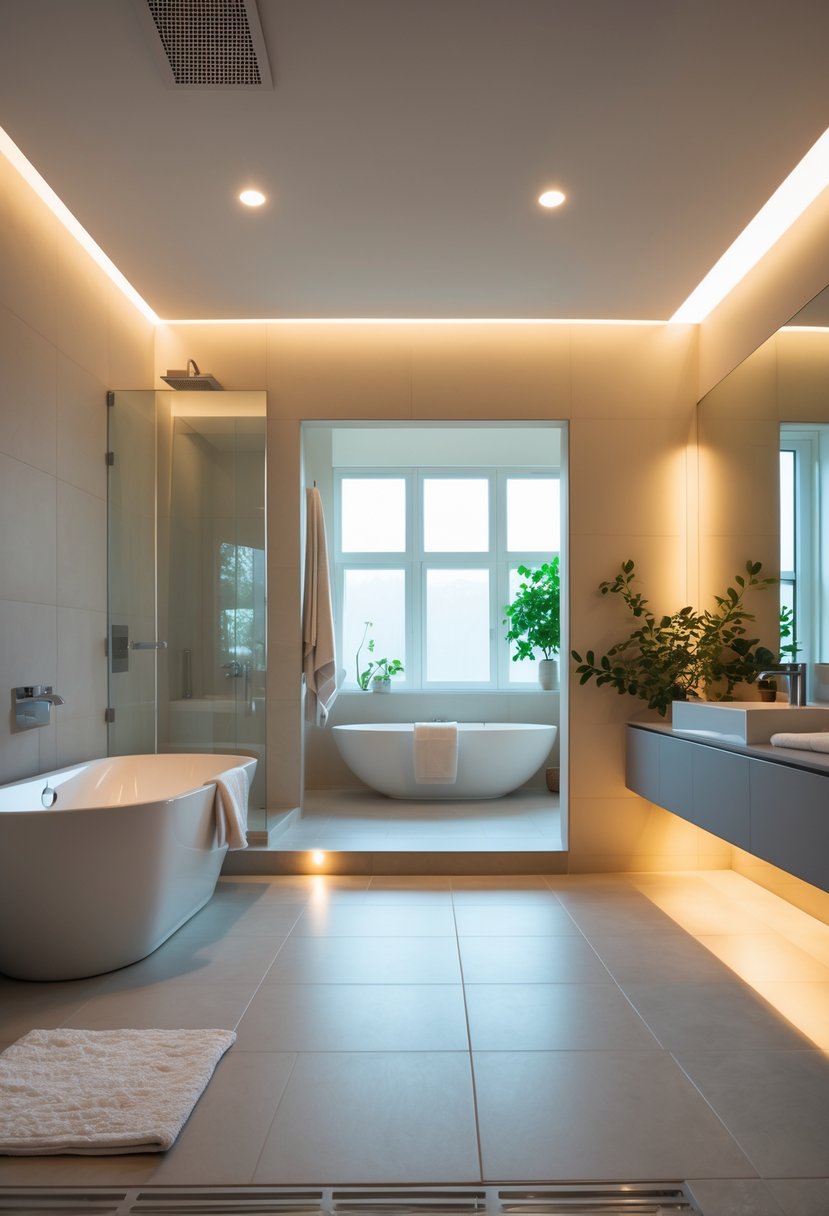
Heated flooring is a practical upgrade in a bathroom remodel. It warms the floor, making cold tiles comfortable, especially in winter.
This system can use electric mats or cables installed beneath the flooring. It provides steady, even heat throughout the room.
Choosing the right flooring material helps the heat work efficiently. Heated floors improve comfort without needing extra space for heaters.
6) Opt for matte black fixtures to create contrast.
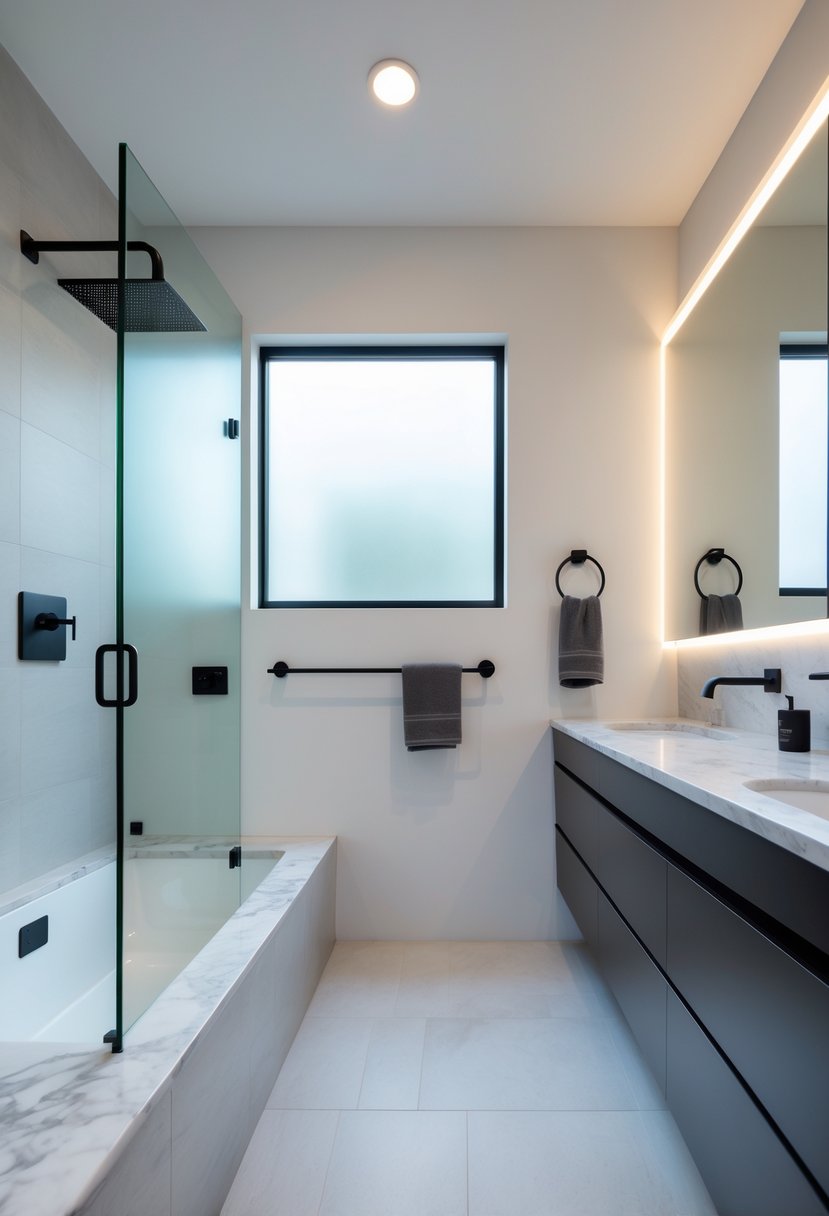
Matte black fixtures add a clear, modern contrast in bathroom design. They work well against light surfaces like white tiles or marble.
These fixtures give the space a sleek, sophisticated look without being too bold or overwhelming. Black faucets, shower frames, and mirrors balance style with function.
Using matte black helps highlight features and adds a refined touch that stays current over time.
7) Install a frameless glass shower enclosure.
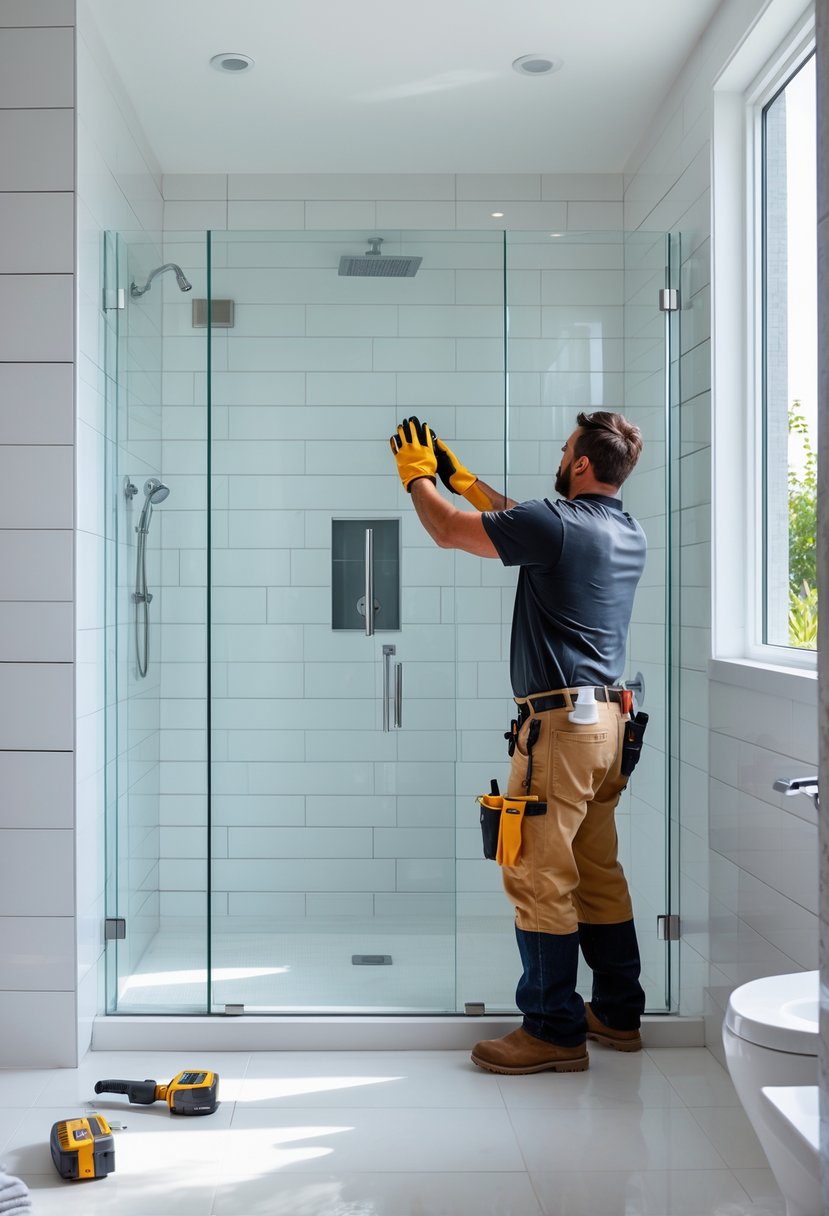
A frameless glass shower enclosure adds a modern and clean look to any bathroom. It uses thick tempered glass without metal frames, creating a sense of openness.
Proper installation is important to prevent leaks and ensure safety. This type of enclosure also makes cleaning easier since it lacks grooves that trap dirt.
It allows more light into the shower, making the space feel larger and more inviting. Regular maintenance will keep it looking clear and functional for years.
8) Use subway tiles with dark grout for a classic twist
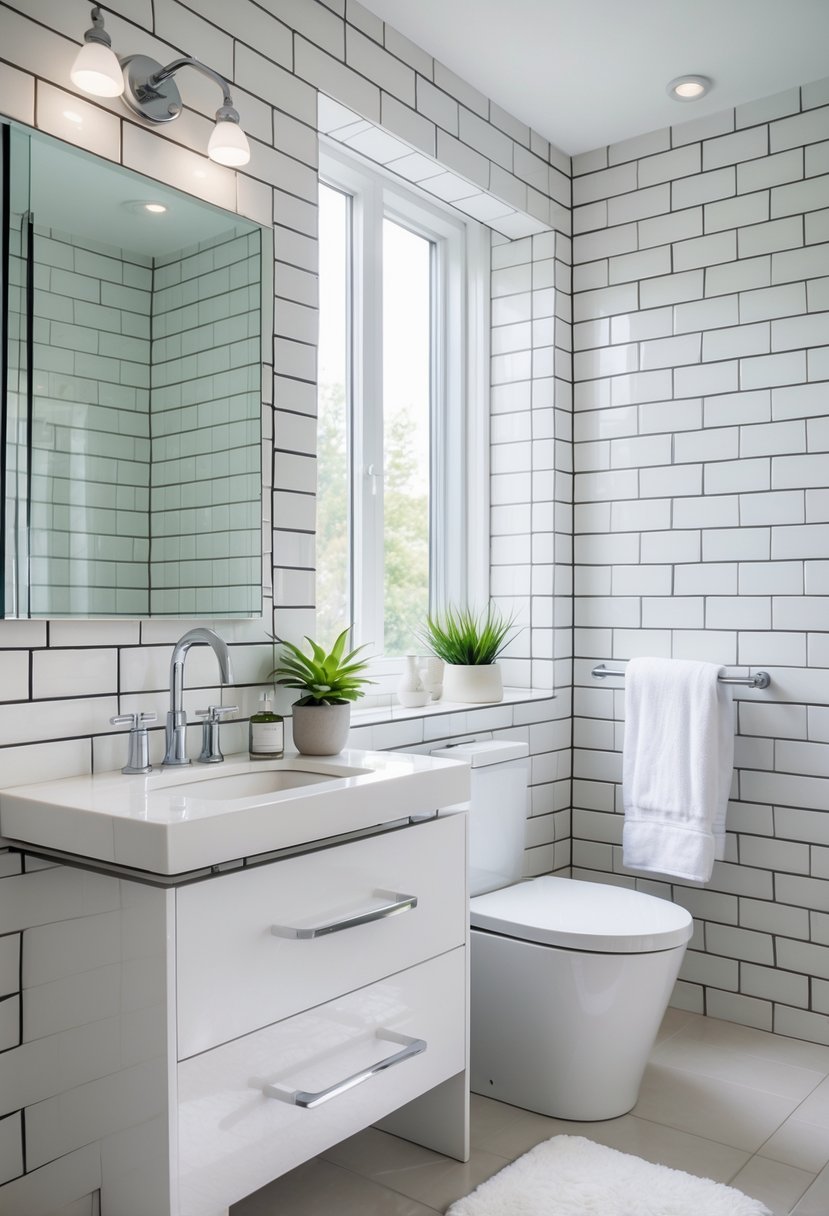
Using subway tiles with dark grout creates a sharp contrast that highlights the tile pattern. This look adds a modern edge while keeping a classic feel.
Dark grout also helps hide stains and dirt, making it practical for bathroom spaces. It works well with white or light-colored tiles to give the room a clean but bold design.
This combination suits various styles, from traditional to contemporary, and can make small bathrooms appear more defined and stylish.
9) Integrate recessed shelving in the shower for toiletries
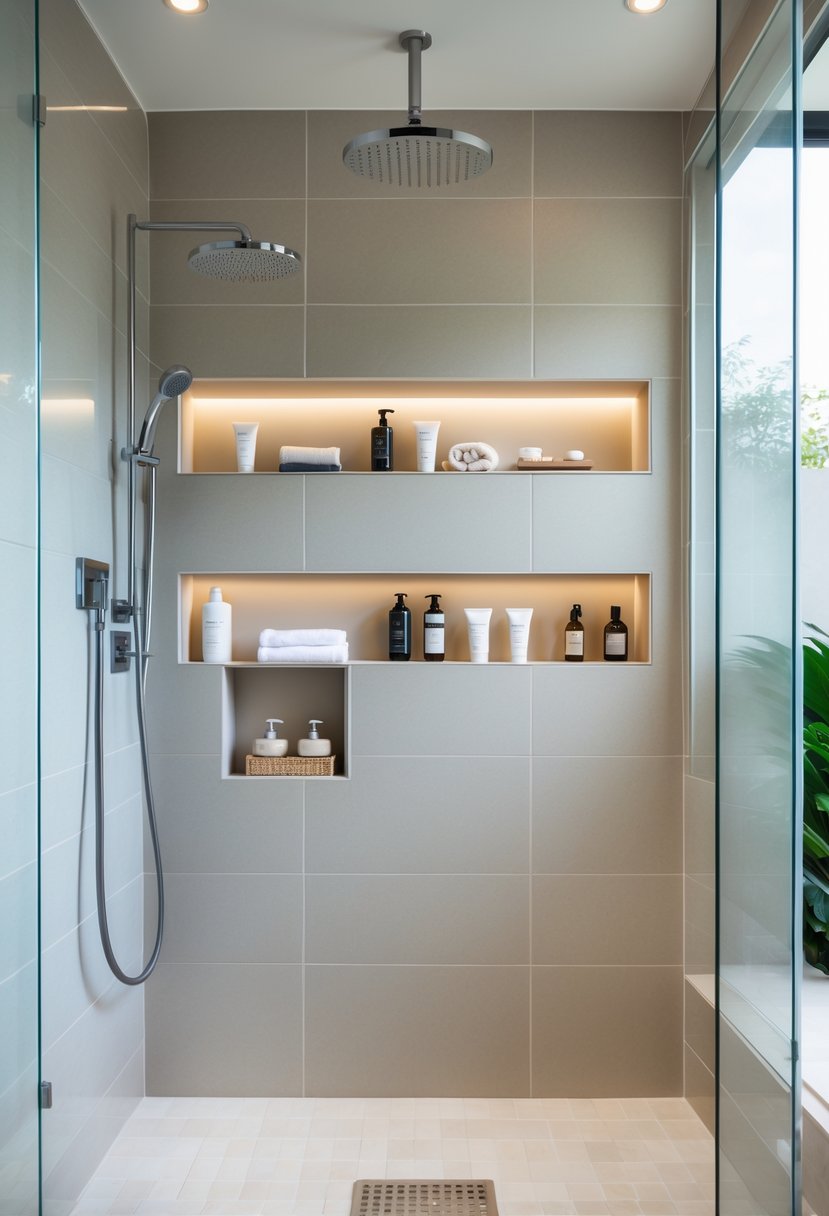
Recessed shelving in the shower provides a practical space to store shampoo, soap, and other toiletries. It keeps items organized and easy to reach without cluttering the shower floor or edges.
These shelves are built into the shower wall, saving space and creating a clean look. They can be customized in size and style to fit the bathroom design.
Adding recessed shelves during a remodel is easier if planned before tiling. Professionals can cut into stud walls to create neat, secure niches.
10) Design with a double vanity for shared bathrooms
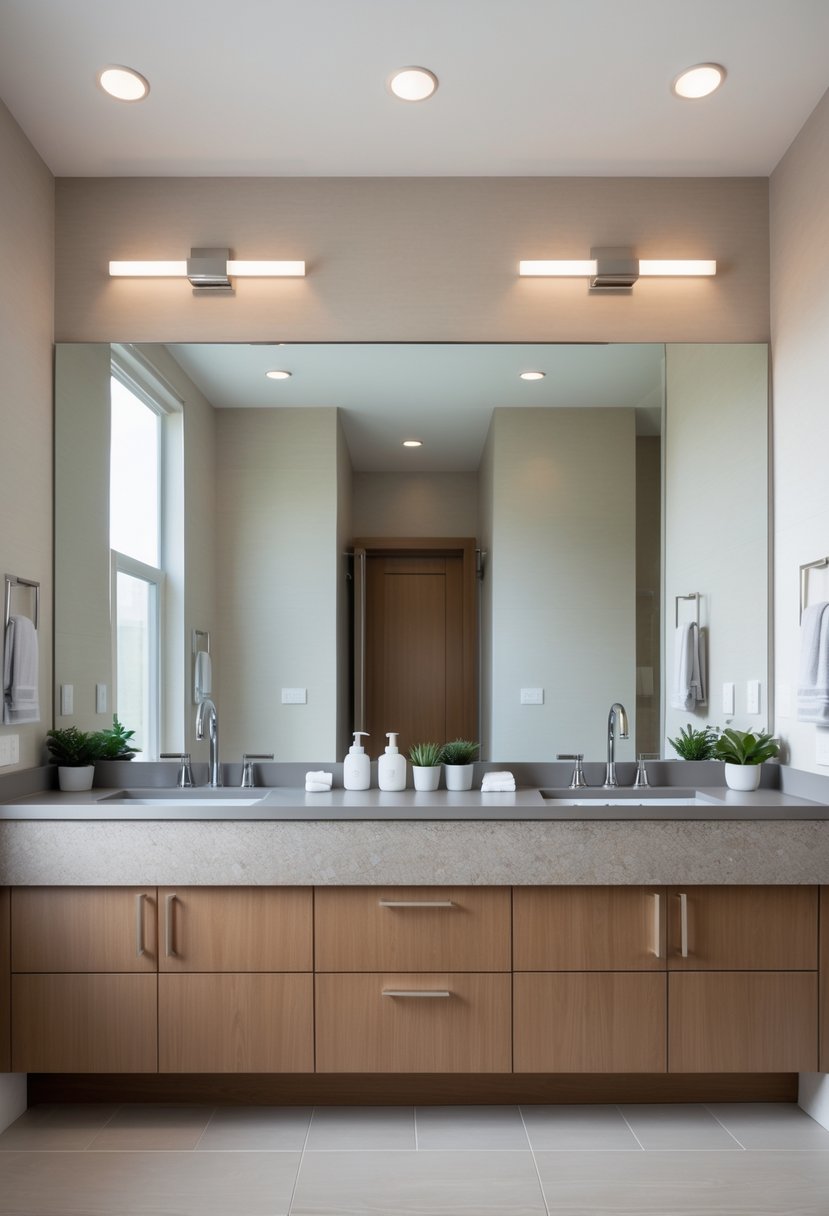
A double vanity offers personal space for two people using the bathroom at the same time. It helps reduce morning and evening rushes by giving each person their own sink and storage.
This design adds more counter space and can improve the bathroom’s overall look. It also supports organization by separating personal items.
Choosing the right size and style is important to fit the room and meet the needs of those sharing the space.
11) Select a quartz countertop for durability and style.
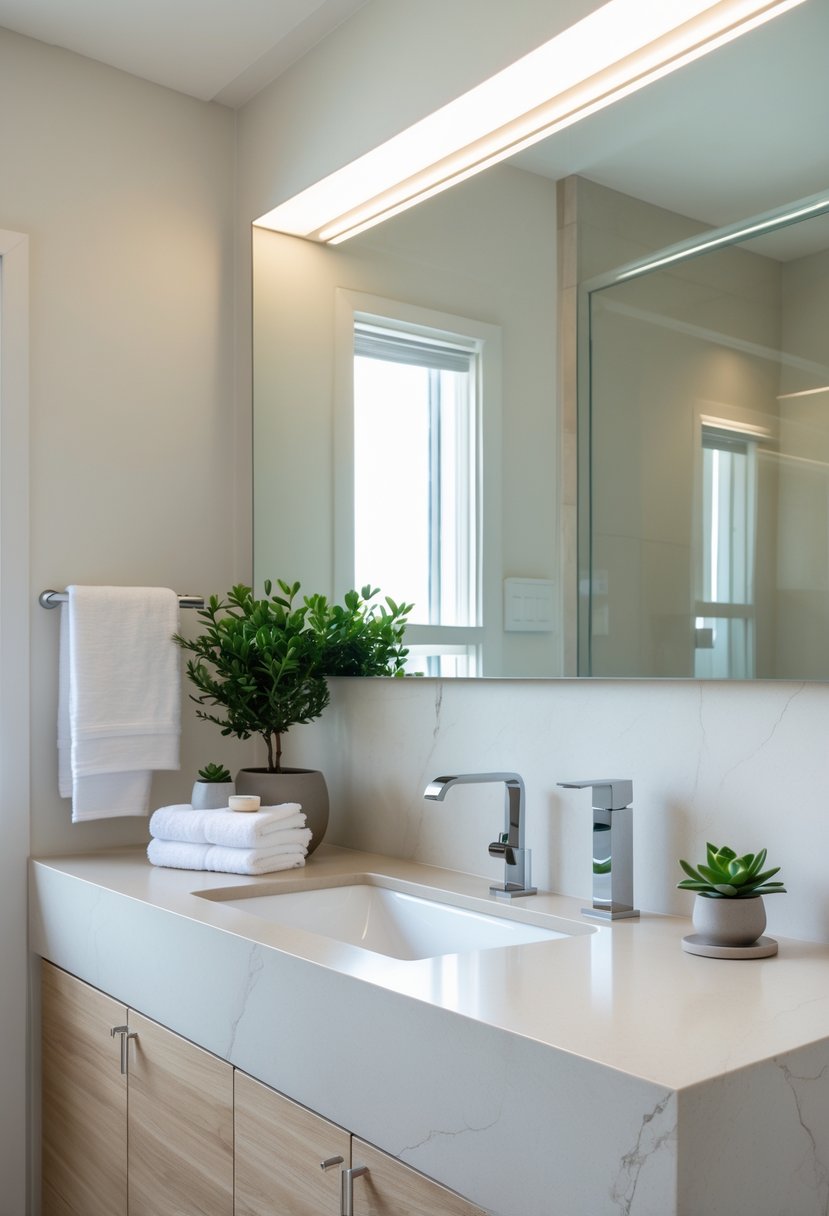
Quartz is a strong and durable material that resists scratches and stains. It requires little maintenance, making it practical for busy bathrooms.
It comes in many colors and finishes, so it fits well with different bathroom styles. This versatility helps homeowners match their design goals easily.
Choosing quartz provides a reliable surface that balances style with long-lasting use. It is a smart option for those focused on both looks and function.
12) Paint walls in soft greige to add warmth.
Soft greige combines gray and beige, creating a warm, neutral tone. It works well in bathrooms by adding subtle color without overpowering the space.
This shade adapts to different lighting, keeping the room cozy in both natural and artificial light. It pairs nicely with green, white, or charcoal accents for a balanced look.
Choosing soft greige paint can make a bathroom feel inviting and timeless while maintaining a clean, modern style.
Key Considerations for a Bathroom Remodel
A successful bathroom remodel starts with clear decisions on what the space needs, how much can be spent, and how long the project will take. These factors guide design choices, material selections, and scheduling to avoid costly mistakes and delays.
Assessing Your Needs and Goals
Before any work begins, it’s important to define what the bathroom must accomplish. The homeowner should ask if the space needs updates for safety, more storage, or a modern look.
They should consider:
- Who uses the bathroom and their needs (e.g., children, elderly, guests)
- Desired features like a walk-in shower or double sink
- How much space is available and if layout changes are possible
Clear goals help focus the renovation on improving daily use, accessibility, and style without adding unnecessary work or cost.
Budget Planning
Setting a realistic budget is critical. The budget must cover all costs, including fixtures, materials, labor, permits, and unexpected expenses.
It is helpful to:
- Research prices for tiles, toilets, vanities, and appliances
- Get multiple contractor estimates for labor
- Set aside at least 10-20% extra for surprises
Prioritizing spending ensures funds go to the most important elements, like quality plumbing or durable surfaces.
| Item | Estimated Cost Range |
|---|---|
| Fixtures & fittings | $1,000 – $5,000 |
| Labor | $2,000 – $10,000 |
| Materials | $800 – $3,000 |
| Contingency fund | 10-20% of total budget |
Timeline Expectations
A bathroom remodel timeline varies by project size and complexity. Planning for the right amount of time prevents stress and rushed decisions.
Typical phases include:
- Planning and design: 1-3 weeks
- Demolition: 1-3 days
- Plumbing and electrical work: 3-7 days
- Installation of fixtures and finishes: 1-2 weeks
- Final touches and cleanup: 2-3 days
Delays can occur due to material availability or unforeseen issues behind walls. It’s best to build cushion time, especially if the home has one bathroom only.
Common Challenges in Bathroom Remodeling
Bathroom remodeling often involves managing technical issues, space needs, and environmental factors. Each of these can affect the project’s cost, timeline, and final quality. Addressing these challenges early leads to smoother progress and fewer surprises.
Plumbing and Electrical Complications
Moving or upgrading plumbing fixtures is usually the most complex part of a remodel. Changing the location of toilets, sinks, or bathtubs often requires new pipes and drains, which can be expensive and time-consuming.
Electrical work also needs careful attention. Bathrooms require proper waterproofing and GFCI outlets for safety. Adding or relocating lighting and outlets may need permits and must meet building codes.
Unexpected issues often arise with old piping or wiring, which may need replacement. This can increase costs and cause delays if not planned for ahead of time.
Maintaining Accessibility
Designing a bathroom that is easy to use is important for all ages and abilities. Remodels should consider features like grab bars, wider doorways, and walk-in showers.
Maintaining or improving accessibility can be challenging when space is limited. It may require creative layouts or special fixtures that fit small areas.
The homeowner should balance style and function to ensure the bathroom remains safe and comfortable, especially for elderly users or those with mobility issues.
Moisture and Ventilation Issues
Bathrooms are prone to moisture buildup, which can cause mold and damage. Proper ventilation is essential to control humidity levels.
Installing or upgrading exhaust fans helps remove moist air quickly. Fans should be powerful enough for the bathroom’s size and vented outside.
Sealing joints and surfaces correctly prevents water leaks. Using moisture-resistant materials reduces long-term damage to walls, floors, and cabinets.
Frequently Asked Questions
Bathroom remodel costs vary depending on materials, labor, and the size of the space. Finding skilled contractors requires research and checking references. Design trends focus on both aesthetics and practical features. Planning layout means balancing style with usability. Timelines depend on the project’s scope. Small bathrooms need smart space-saving solutions.
What factors influence the cost of a bathroom renovation?
Costs depend on the quality of materials like tiles and fixtures. Labor rates and the extent of plumbing or electrical work also impact the budget. Upgrading to features such as heated flooring or LED mirrors can increase expenses. The size of the bathroom and any structural changes add to the total cost.
How can I find reputable contractors for a bathroom overhaul?
Start by asking for recommendations from friends or family. Check online reviews and verify licensing and insurance. Interview multiple contractors to compare quotes and communication style. He or she should provide a detailed estimate and references from past projects.
What are the current trends in bathroom design ideas?
Large-format porcelain tiles create a clean, modern appearance. Floating vanities offer more open floor space and storage. LED backlit mirrors add soft, efficient lighting. Freestanding soaking tubs serve as a centerpiece. Heated floors increase comfort throughout the year.
What should I consider when planning a bathroom layout and functionality?
Focus on easy movement and accessibility. Place the vanity, toilet, and shower for practical use. Think about storage needs and ventilation. Lighting should be layered with ambient, task, and accent options. Durable materials that withstand moisture are important.
How long does a typical bathroom remodel take to complete?
A standard remodel generally takes 3 to 6 weeks. Simple updates may finish sooner, around 2 weeks. More extensive work involving plumbing or structural changes can extend the timeline. Delays sometimes occur due to materials availability or unexpected issues.
What are the best ways to maximize a small bathroom space during renovation?
Use a floating vanity to free up floor area. Choose large-format tiles to make the room feel bigger. Install glass shower doors instead of curtains. Add mirrors, especially those that are backlit, to reflect light and open the space. Built-in niches and shelves provide hidden storage.


